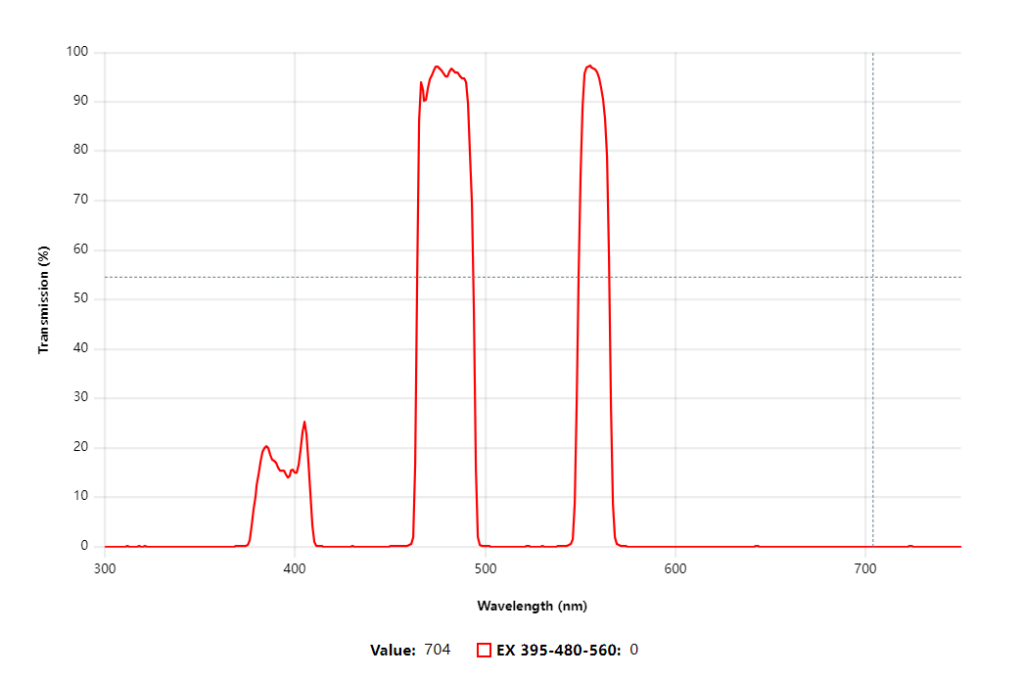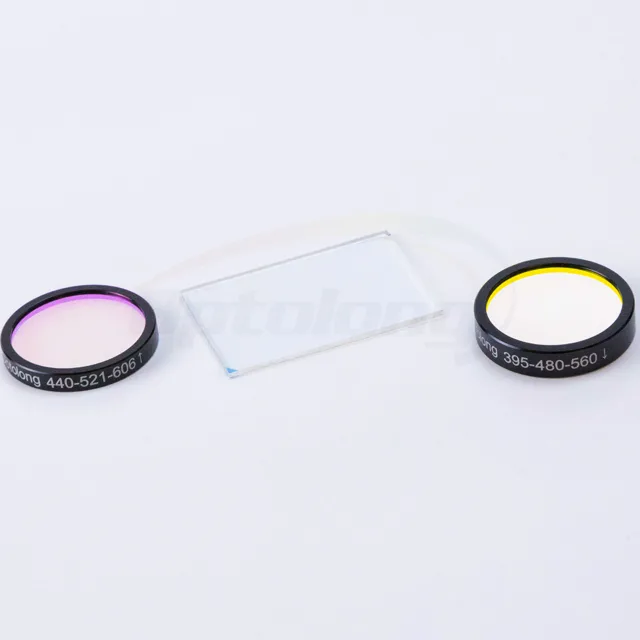In optics, multiple bandpass filters play a key role in precisely controlling the wavelengths of light passing through an optical system. These filters are designed to transmit light within a specific wavelength range, or “band,” while blocking other wavelengths. By combining multiple bandpass filters, systems can be fine-tuned to increase efficiency, accuracy, and functionality for a variety of applications such as spectroscopy, imaging, and laser technology.
In this article, we will explore the many benefits of multiple bandpass filters in optics, from their contribution to improving signal-to-noise ratios to their critical role in multispectral imaging.
1. Enhanced Wavelength Selection

Multi-bandpass filters enable precise wavelength selection. Optical systems often need to isolate specific ranges of wavelengths to achieve precise measurement or imaging results. Using multi-bandpass filters, a system can be configured to pass several different bands of light while rejecting others.
This is particularly useful in applications such as fluorescence microscopy, spectroscopy, and remote sensing, where isolating and detecting specific wavelengths is important to achieve accurate results.
By controlling the exact wavelengths passed, multi-bandpass filters provide a more versatile solution than single-band filters.
In systems that collect multiple signals or spectral data, having filters that can isolate multiple wavelength ranges ensures that the system can operate with fewer components, reducing complexity and improving overall performance.
Example: Fluorescence Microscopy
For example, in fluorescence microscopy, multi-bandpass filters enable the ability to detect multiple fluorescence emission signals in one system. Using multiple bandpass filters allows scientists to observe a variety of fluorophores that emit different wavelengths of light in a single experiment. This can increase efficiency and collect data more comprehensively.
2. Improved Signal-to-Noise Ratio
Another key benefit of multi-bandpass filters is their ability to improve the signal-to-noise ratio (SNR) in optical systems. By selectively transmitting only the desired wavelengths, these filters help block unwanted or stray light from other parts of the spectrum that could introduce noise. This results in a cleaner signal, which is particularly important in high-precision applications such as astronomy, biomedical imaging, and spectroscopy.
For example, in spectroscopy, unwanted wavelengths can obscure or distort the reading of the target wavelength. Multiple bandpass filters ensure that only the wavelengths relevant to the analysis are detected, thereby improving the accuracy of the spectral data.
Example: Laser Applications
In laser technology, the purity of the optical signal is critical to achieving precise results. Multiple bandpass filters can be used to fine-tune the output of the laser by filtering out all desired wavelengths. This helps improve the quality of the laser beam and enhances the overall performance of the system, whether the goal is to cut materials or perform delicate optical surgery.
Click to learn: Single Bandpass Filters vs Multi Bandpass Filters
3. Flexibility and Customization

Multi-bandpass filters offer flexibility and customization options. Optical filter manufacturers can customize their filters to meet specific requirements, thereby filtering multiple wavelength ranges simultaneously. This makes them useful in complex optical systems that need to detect or block many different wavelengths.
Example: Hyperspectral Imaging
In hyperspectral imaging, multi-bandpass filters separate light into many narrow bands. This technique allows the spectral properties of an object to be analyzed in detail over a wide range of wavelengths. The customization potential of multiple bandpass filters allows the design of imaging systems to focus on very specific spectral bands, thus giving scientists and engineers greater control over the data collected.
Additionally, multiple bandpass filters can be stacked or used in tandem with other filters to create more refined optical systems. This is particularly beneficial in applications such as telecommunications, where different data channels are transmitted at different wavelengths, and in biomedical instrumentation, where multiple biomarkers need to be detected in a single system.
4. Compact, Simplified Systems
The use of multiple bandpass filters can significantly reduce the complexity of an optical system. Instead of using multiple single-band filters to capture different parts of the spectrum, the design of an optical device can be simplified with a single filter that transmits multiple bands. This allows for more compact systems that are easier to manage, less expensive, and often more rugged.
Example: Multi-spectral Sensors
Multi-spectral sensors are used in a wide range of applications from environmental monitoring to agriculture because of their ability to detect multiple wavelength bands. By using multiple bandpass filters, these systems can capture data at a range of wavelengths in a single pass without the need for multiple sensors or complex switching mechanisms.
Reduced complexity also benefits the manufacturing process, as fewer components mean fewer potential points of failure, which improves system reliability. In addition, more compact systems can be integrated into portable or space-constrained equipment, and are therefore widely used by, for example, mobile spectroscopy or UAV-based remote sensing.
5. Multispectral and Hyperspectral Imaging Performance Enhancements
One of the areas in which multibandpass filters excel is multispectral and hyperspectral imaging. These techniques rely on capturing images or data in multiple wavelength bands to provide detailed information about the object being observed.
Whether it’s analyzing the health of vegetation in precision agriculture or detecting mineral composition in geology, multi-bandpass filters are essential for these tasks.
Example: Remote Sensing
In some remote sensing applications such as satellite imaging, multi-bandpass filters are used to detect different environmental parameters such as water quality, vegetation health, and soil composition. By using filters that pass through specific bands of the electromagnetic spectrum, remote sensing instruments can collect data that would otherwise be difficult to obtain. These data are then used to create multispectral or hyperspectral images that provide a wealth of information in different spectral ranges.
The accuracy provided by multiple bandpass filters in such systems can better distinguish between different materials or biomarkers. This is especially true when trying to detect subtle changes in the environment or monitor critical processes in biological research.
6. Durability and Stability
Optical filters must always maintain stable performance under various conditions, including extreme temperatures, humidity, and vibration. Multi-bandpass filters like Optolong’s are made with advanced optical coating technology and have high durability and stability.
Example: Space Exploration
In space exploration, optical instruments must withstand the harsh conditions of space, including strong radiation, temperature fluctuations, and vacuum environments.
Multi-bandpass filters used in space telescopes or spectrometers must maintain their performance for a long time without degradation. The stability of these filters ensures that space missions can continue to collect accurate data even under extreme conditions.
Conclusion
Multi-bandpass filters have become an integral part of the optical field due to their high precision, flexibility, and ability to improve system performance. These filters allow for selective wavelength transmission, which improves signal-to-noise ratios, enhances imaging capabilities, and reduces the complexity of optical systems.
In short, whether it is enabling advanced multispectral imaging, improving the precision of laser systems, or facilitating the creation of compact and efficient optical devices, multi-bandpass filters have important advantages that drive progress in the field of optics.
The Optolong website offers many multi-bandpass filters for different optical applications. These filters include three-band excitation and emission filters, with specific ranges including 395-480-560nm and 440-521-606nm, etc. In addition, they also provide many optical filters such as dichroic filters, long and short pass filters, and more. For more information or your customized needs, please contact us online.
